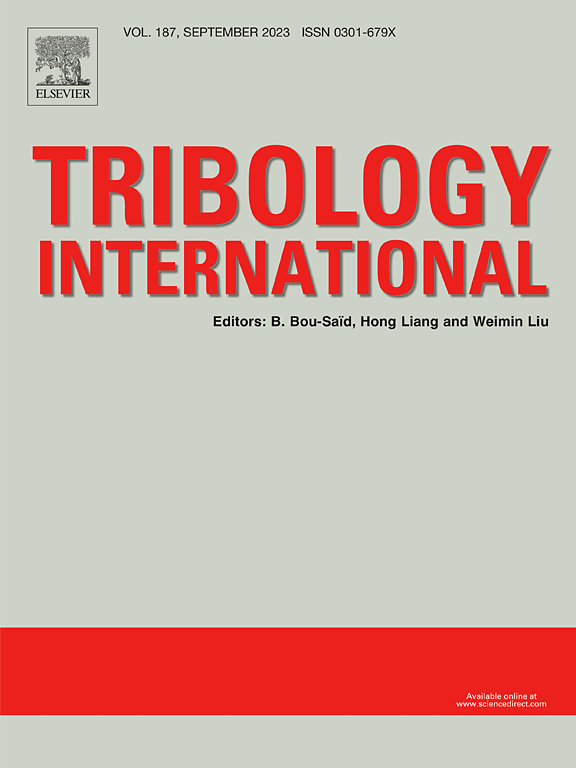Friction and chemical action of deionized water on microscopic wear of sapphire surface
IF 6.1
1区 工程技术
Q1 ENGINEERING, MECHANICAL
引用次数: 0
Abstract
Nano wear testing of C-directional single crystal sapphire was conducted using atomic force microscopy in deionized water. The friction and chemical action of deionized water on the micro wear of sapphire was studied by comparing it with the anhydrous ethanol environment. The experimental results indicate that deionized water has both positive and inhibitory action on the micro wear of sapphire materials. It is closely related to the sliding speed of the probe tip. In the low sliding speed range, deionized water has a negative influence on the surface wear of sapphire. When the sliding speed reaches 4 μm/s, the average wear depth of sapphire surface in deionized water is significantly improved. In addition, the influence of cycles on micro wear of sapphire surface is not related to the liquid environment of the contact interface. When the load is 0.24, 0.96, and 2.40 μN, the surface wear depth of sapphire in deionized water is 128 %, 48 %, and 35 % higher than that in anhydrous ethanol, respectively. The promoting effect of deionized water on the removal of sapphire is attributed to the Si-O-Al bridge bond formed between the silicon tip and the substrate. Besides, the soluble substance (Al(OH)4-) is generated by the reaction between the sapphire surface and water. The research results can provide reference for understanding the mechanical and chemical wear of sapphire.
去离子水对蓝宝石表面微观磨损的摩擦和化学作用
利用原子力显微镜对c向单晶蓝宝石在去离子水中的纳米磨损进行了测试。通过与无水乙醇环境的比较,研究了去离子水对蓝宝石微磨损的摩擦和化学作用。实验结果表明,去离子水对蓝宝石材料的微磨损既有积极作用,也有抑制作用。它与探针尖端的滑动速度密切相关。在低滑动速度范围内,去离子水对蓝宝石表面磨损有负面影响。当滑动速度达到4 μm/s时,蓝宝石表面在去离子水中的平均磨损深度显著提高。此外,循环对蓝宝石表面微磨损的影响与接触界面的液体环境无关。当负荷量为0.24、0.96和2.40 μN时,蓝宝石在去离子水中的表面磨损深度分别比在无水乙醇中高128 %、48 %和35 %。去离子水对蓝宝石去除的促进作用是由于硅尖与衬底之间形成了Si-O-Al桥键。蓝宝石表面与水反应生成可溶性物质Al(OH)4-。研究结果可为了解蓝宝石的机械磨损和化学磨损提供参考。
本文章由计算机程序翻译,如有差异,请以英文原文为准。
求助全文
约1分钟内获得全文
求助全文
来源期刊

Tribology International
工程技术-工程:机械
CiteScore
10.10
自引率
16.10%
发文量
627
审稿时长
35 days
期刊介绍:
Tribology is the science of rubbing surfaces and contributes to every facet of our everyday life, from live cell friction to engine lubrication and seismology. As such tribology is truly multidisciplinary and this extraordinary breadth of scientific interest is reflected in the scope of Tribology International.
Tribology International seeks to publish original research papers of the highest scientific quality to provide an archival resource for scientists from all backgrounds. Written contributions are invited reporting experimental and modelling studies both in established areas of tribology and emerging fields. Scientific topics include the physics or chemistry of tribo-surfaces, bio-tribology, surface engineering and materials, contact mechanics, nano-tribology, lubricants and hydrodynamic lubrication.
 求助内容:
求助内容: 应助结果提醒方式:
应助结果提醒方式:


